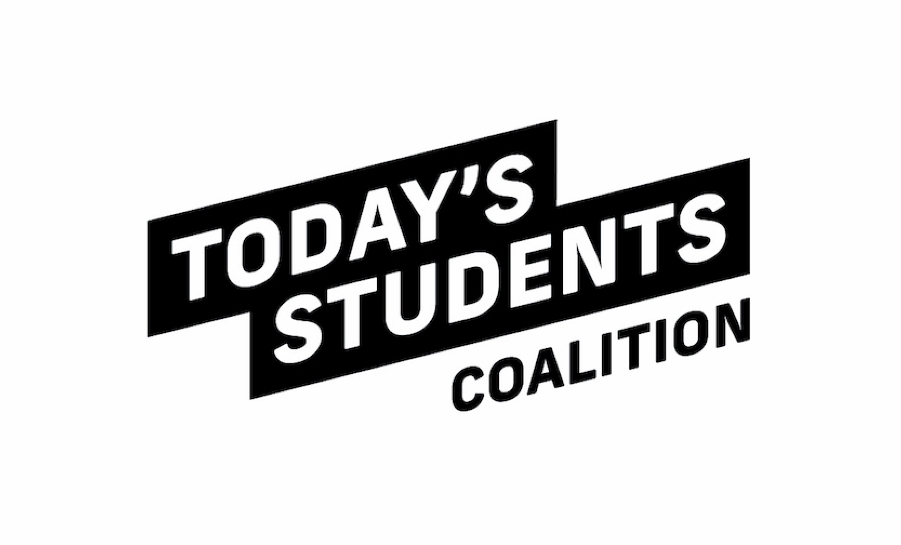The Center Joins Today's Students Coalition
Diane Schorr J.D., CAPⓇ, FirstGen Forward / FirstGen Forward / April 08, 2020

On March 31, 2020, Today’s Student Coalition announced the addition of coalition members including the Center for First-generation Student Success. The Center is honored to join the Today’s Students Coalition which consists of advocates for post-secondary policies that support the success of today’s students. The coalition members are interested in ensuring that reauthorization of the Higher Education Act (HEA) addressed the concerns of “non-traditional” students, including veterans, low-income students, first-generation students, parents and adults returning to school; a student population representing roughly 70% of all undergraduate students.
When thinking about college students, young adults ranging between 18-24 years, entering directly from high school, typically come to mind. Data from the National Center for Education Statistics (NCES, 2015) demonstrates a different narrative. Of the 17 million Americans enrolled in undergraduate programs in higher education, students had at least one of the following characteristics:
- 1 in 5 is at least 30 years old
- About half are financially independent from their parents
- 1 in 4 is caring for a chil
- 47 percent go to school part time at some point
- A quarter take a year off before starting school
- 2 out of 5 attend a two-year community college
- 44 percent have parents who never completed a bachelor's degree
The NCES report concludes, students with these characteristics can be vulnerable to challenges that can affect their likelihood of persisting and attaining a degree (Berkner, Cuccaro-Alamin, and McCormick 1996; Berkner, He, and Cataldi 2002; Choy 2002; Horn 1996; Skomsvold, Radford, and Berkner 2011). Thus, policy makers must take into consideration the effects of their decisions on the growing population of “today’s students,” who have been considered “non-traditional” students in the past.
NASPA − Student Affairs Administrators in Higher Education, is a founding member of the coalition and strong advocate for student success. While NASPA’s advocacy efforts are more broadly based than the Center’s, first-generation students comprise a large portion of the constituency served by the Today’s Students Coalition and, as a separate member, the Center can ensure that it focuses on advocating for first-generation students’ diverse interests as well as intersectional identities. As a dedicated coalition member, the Center can share its knowledge base and unique perspective on this important subset of today’s students.
Through provision of services and guidance across institutional types, the Center aims to acknowledge the intersectional identities and experiences of first-generation college students. The first-generation identity intersects with other identities of today’s students -- part-time learner, working student, online learner, veteran, parent, etc., and adds another contextual layer that may affect these students’ access and knowledge about post-secondary processes and policies. The Center’s audiences serve first-generation populations in a variety of ways, and the Center can serve its constituency by gathering and sharing information in the issue areas championed by the coalition.
The Center is poised to increase its advocacy efforts on behalf of first-generation students. The coalition’s policy positions, particularly in the student success realm, align well with the interests of those the Center serves. The Center engages with a diverse set of institutions ranging from community and technical colleges to public and private four-year institutions. By joining the Today’s Students Coalition, the Center can amplify its efforts on behalf of our community in concert with trusted partners.
To learn more about #TodaysStudents follow @TS_Coalition on Twitter.
References:
Demographic and Enrollment Characteristics of Nontraditional Undergraduates: 2011-12, U.S. Department of Education, National Center for Education Statistics (September 2015).
Berkner, L., Cuccaro-Alamin, S., and McCormick, A. (1996). Descriptive Summary of 1989–90 Beginning Post- secondary Students: Five Years Later (NCES 96-155). National Center for Education Statistics, U.S. Department of Education. Washington, DC.
Berkner, L., He, S., and Cataldi, E.F. (2002). Descriptive Summary of 1995–96 Beginning Postsecondary Students: Six Years Later (NCES 2003–151). National Center for Education Statistics, U.S. Department of Education. Washington, DC.
Choy, S. (2002). Nontraditional Undergraduates (NCES 2002-012). National Center for Education Statistics, U.S. Department of Education. Washington, DC.
Horn, L. (1996) Nontraditional Under- graduates: Trends in Enrollment From 1986 to 1992 and Persistence and Attainment Among 1989–90 Begin- ning Postsecondary Students (NCES 97-578). National Center for Educa- tion Statistics, U.S. Department of Education. Washington, DC.
Skomsvold, P., Radford, A.W., and Berkner, L. (2011) Web Tables— Six-Year Attainment, Persistence, Transfer, Retention, and Withdrawal Rates of Students Who Began Postsecondary Education in 2003–04 (NCES 2011-152). National Center for Education Statistics, Institute of Education Sciences, U.S. Department of Education. Washington, DC.





